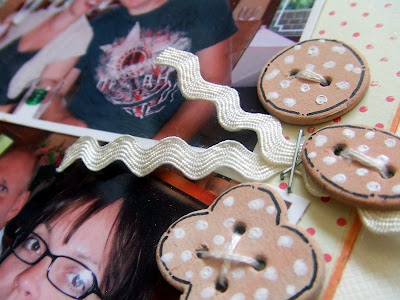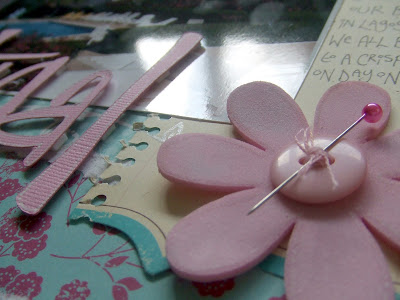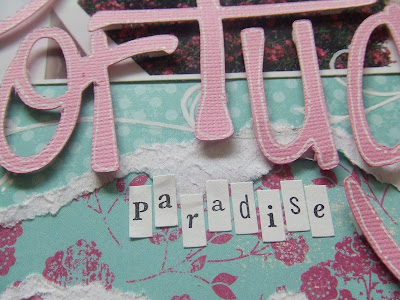













 So feel free to follow it completely, change it around flip it!!! it is entirely up to you. But it does have to be a double page!
So feel free to follow it completely, change it around flip it!!! it is entirely up to you. But it does have to be a double page!

Alcohol Inks
Felt pads
Ink applicator tool
Blending solution
Metallic Mixatives (optional)( krylon pens work too)
Glossy card stock (not photo paper)
Protective cover for work surface
PLEASE NOTE
Please ensure that ALL work surfaces are protected – although blending solution is a fantastic medium for removing ink it will NOT work on everything and could leave stains.... ALSO ensure that the room you use is WELL ventilated and one last thing NO NAKED FLAMES near the inks!!!
Right with those points out of the way, lets play:-
Place your felt pad onto the applicator – choose your inks and place 2 second squeezes of ink onto the felt. Do not mix the colours (at this stage). You can use one colour or any number, although three is usually the maximum without “mudding” your colour. With dabbing motions dab onto your glossy cardstock.
 When the cardstock is covered – add a squirt of blending solution to the felt and dab
When the cardstock is covered – add a squirt of blending solution to the felt and dab

 Within seconds you will have a great piece of background to work with.
Within seconds you will have a great piece of background to work with.
 The main thing with alcohol inks is to play. Add more ink, less ink, put the mixative straight to the inked piece, add the mixative when adding the initial inks. The results are all fantastic, but, will be different each time. Try mixing the inks on the felt to make other colours, remember your paint mixing from school? Try it and make colours you haven’t got. My fave colour is orange, so I mix “cranberry” and “butterscotch” together with some gold for a great orange. Play and see what you can come up with.
The main thing with alcohol inks is to play. Add more ink, less ink, put the mixative straight to the inked piece, add the mixative when adding the initial inks. The results are all fantastic, but, will be different each time. Try mixing the inks on the felt to make other colours, remember your paint mixing from school? Try it and make colours you haven’t got. My fave colour is orange, so I mix “cranberry” and “butterscotch” together with some gold for a great orange. Play and see what you can come up with.
The backgrounds can be stamped onto, but, you will have to use a “dye” ink pad, like memories or Archival, otherwise it won’t set! If you add heat, the alcohol inks bubble and burst!! (take it from one that’s tried!). Try punching out shapes and adding buttons or bling to add dimension to your scrapped pages, or using entire as a photomount. Your imagination is the limit!
 Alcohol inks are great on all non porous surfaces, so try them on a piece of stampbord. Hold the stampbord at an angle (protect the bottom!) and add the ink direct to the board running it down, when dry (only a few moments depending on how much ink you’ve added) stamp and hi light.
Alcohol inks are great on all non porous surfaces, so try them on a piece of stampbord. Hold the stampbord at an angle (protect the bottom!) and add the ink direct to the board running it down, when dry (only a few moments depending on how much ink you’ve added) stamp and hi light.Add the inks to a tin/cd, using the basic method above, dab the inks over the item, adding mixatives and blending solution either direct or via dabber! Great results and a fun way to wrap a present or use those spam cd’s!


 Use the inks on acetate, this can be done either by the technique mentioned and then used over a photograph to give it a “dreamy” effect or again punched for unique embellishments. On the acetate card, I’ve placed inked acetate over a stamped image and cut to size, with the left over inked acetate I’ve stamped some butterfly’s, allowed to dry and then cut out, added some stickes and used as embellishements on the card...
Use the inks on acetate, this can be done either by the technique mentioned and then used over a photograph to give it a “dreamy” effect or again punched for unique embellishments. On the acetate card, I’ve placed inked acetate over a stamped image and cut to size, with the left over inked acetate I’ve stamped some butterfly’s, allowed to dry and then cut out, added some stickes and used as embellishements on the card...


Another fantastic method with inks on acetate is the “caught in crystal” technique. A method which uses acetate, inks and glossy accents/diamond glaze, tissue paper...... making sure the worksurface is covered pour a puddle of glossy accents/diamond glaze onto the acetate sheet, add inks, (now these can be mixed together, or added in stripes, or patches, create!) you can bleed them together using cocktail sticks then whilst still wet, add crumpled up tissue paper, be careful not to bleed the colours further and dirting them, and try not to flatten out the tissue paper then leave to dry...once dry punch out those fabby shapes and embellish away – or another method is to stamp the acetate with stazon, once dry, pour the puddle of glossy accents/diamond glaze onto the stamped image, add inks....etc....once dry the stamped image can then be used for cards, decorations etc....


At the end of the “play” your fingers will be inky! Sorry, but, there’s no getting away with that one! Try using a little of the blending solution to remove the ink. The blending solution can also help with any stray splashes of ink which might have escaped from the work area – but, please note that this doesn’t always work and the best way to not have to get ink off a white work surface before the OH gets home/ discovers it is to ensure its covered!
I’ve only mentioned and illustrated a few ideas for using inks they can be used on so much – look at Tim Holtz’s heatgun, even that has been given an alcohol ink makeover! The limit to their use is your imagination – have fun and create..............................
 Next i figured out what colour i wanted them to be. White and sparkly seemed the way to go. So i inked all the letters with white ink...
Next i figured out what colour i wanted them to be. White and sparkly seemed the way to go. So i inked all the letters with white ink...




 Also on the Happy Easter page, you can see that i mirrored how i did the edges of the pages, with the scalloped edges and the torn paper. This makes it seem like on big page, even though this is a double 8 1/2 by 11 page. Also the design principle of the visual triangle still applies to double pages... ie.. on the Happy Easter layout the visual triangle is the journaling, title and the flowers on the bottom right hand corner. Click on the pages to make them bigger.
Also on the Happy Easter page, you can see that i mirrored how i did the edges of the pages, with the scalloped edges and the torn paper. This makes it seem like on big page, even though this is a double 8 1/2 by 11 page. Also the design principle of the visual triangle still applies to double pages... ie.. on the Happy Easter layout the visual triangle is the journaling, title and the flowers on the bottom right hand corner. Click on the pages to make them bigger.



 I alternated the photos with titles of what each photo is about. But you can add more photos to the other squares and save the journalling for outside the edges.
I alternated the photos with titles of what each photo is about. But you can add more photos to the other squares and save the journalling for outside the edges.

 You then need a stamp like i have shown in the picture below. You can find them here. I use a ruler for my instead of an acrylic block ( purely because i dont have a long one lol).
You then need a stamp like i have shown in the picture below. You can find them here. I use a ruler for my instead of an acrylic block ( purely because i dont have a long one lol).
 Take off all the bits of paper and cut out.
Take off all the bits of paper and cut out. This does take a bit of practice but i love it, and you are only restricted by the stamps in your collection.
This does take a bit of practice but i love it, and you are only restricted by the stamps in your collection. Mount it onto a block and stamp a few times onto the transparency. With this idea i dont bother about whether or not it has stamp properly as i love the effect when it is not.
Mount it onto a block and stamp a few times onto the transparency. With this idea i dont bother about whether or not it has stamp properly as i love the effect when it is not.

 I used this stamp to put together this part of the page...
I used this stamp to put together this part of the page...
